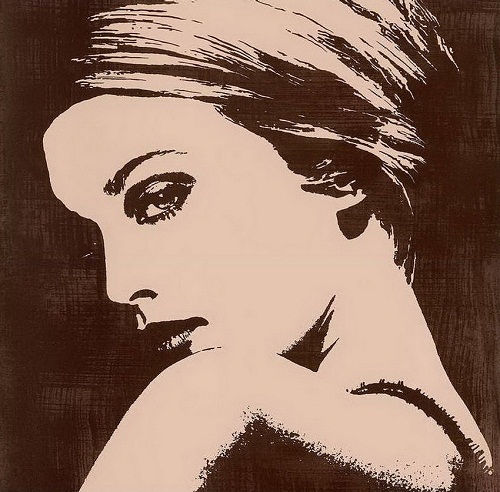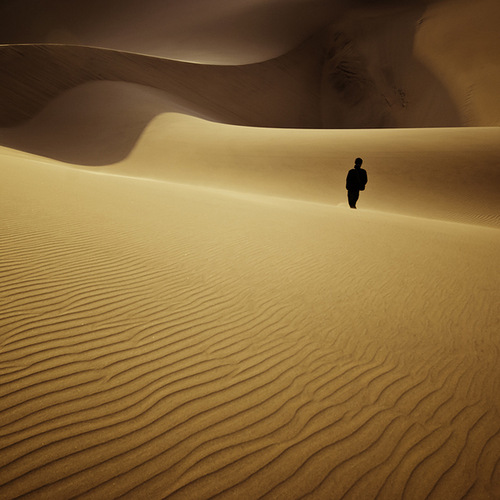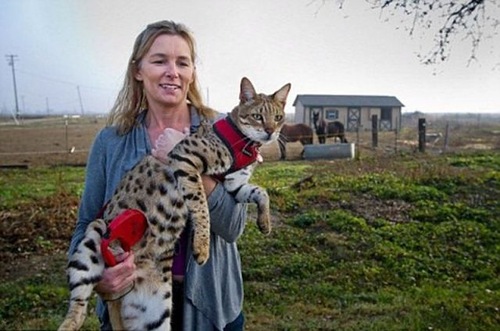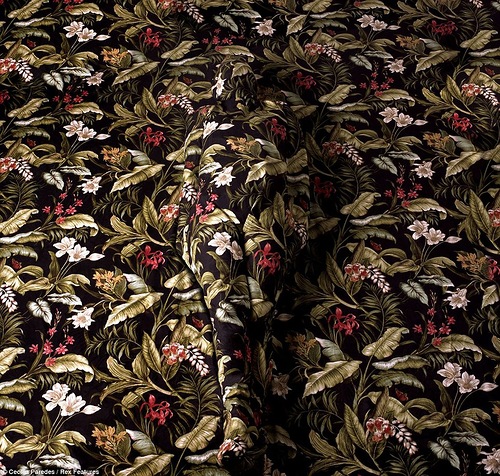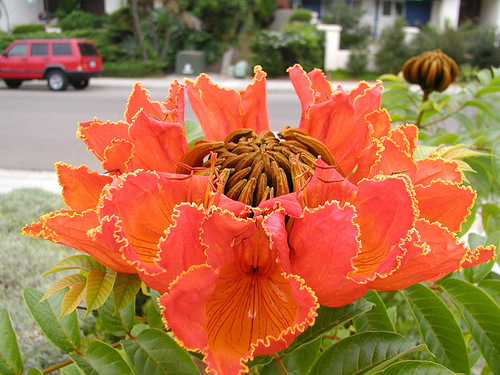African kings of disappearing era
African kings of disappearing era
From 1988 to 1991, French photographer Daniel Laine took pictures of 70 African monarchs. In fact, the dynasty that created the history of Africa until the mid-20th century. Meanwhile, of the hundreds of monarchs, Laine concentrated on those who continued to “preserve the tradition and spiritual power, which is difficult to understand the Western mind”. In addition, Laine recalls the difficulty of obtaining permission for photographs, and sensual diplomatic negotiations in many cases. In particular, the war in Sudan prevented Laine from photographing Shiluka King, a descendant of black dynasties who ruled in Egypt. And some, including the King of Swaziland, refused to be photographed. Published in 2000 book includes photos made more than 20 years ago. So, most likely, some of the rulers are no longer alive.
Joseph Langanfin (Benin), representing the Abomey dynasty, is president of the council of the royal families of Abomey. With this title he is regarded as the official representative of the kings of Abomey. He was chairman of the funeral of King Glele, who was his great-grandfather.
Oni Ife (Nigeria) in 1980 was Siyuvade 15th Oni (King) of Ife – one of the most ancient African dynasties. Earlier, during the coronation Oni had to take the sword of justice, and to enter his palace on the carpet, soaked dried blood of the sacrificed men and women. Oni – a rich businessman with a number of private property in Nigeria and England.
Nghi Kamga Joseph – Fon Bandzhuna (Cameroon) – brother of the brave and powerful animals. At night it can turn into a panther and hunt in the woods, running through the savanna and drink from the streams. If a hunter kills a panther, Fons from the Bamileke region are beginning to be afraid. Former CEO and formerly head of the Cabinet Minister of Finance of Cameroon in 1964, Joseph is Kamga 13th Bandzhuna Fon. On the day of the funeral of his predecessor, he was stopped on the market Bandzhuna two chapters Bamileke – “hanged men.” In the headgear as a sign of sisalya humiliation he was taken to the nobility – “tafo measure,” in which he was 9 weeks, learned to be king.
Khalid Salih – Lamido Bibemi (Cameroon), Khalid Salih, 12th Lamido (king) Bibemi got his throne in 1958. He is a descendant of Aydo Samba, one of the 42 kings of Adamawa, which in the 18th century, carried the flag Cihan (holy war) ‘Uthman dan Fodio.
Oseadeyo Addo Dankwa III – King of Akropong-Akuapem (Ghana). A graduate of London University and economic adviser to the Ghanaian administration, the king Akropong for 16 years is “sacred place” Akuapem-AcOH, one of the seven major Akan clans. To his right is his “representative” with the royal emblem – an elephant, reminding that his kingdom was established by force.
Abubakar Sidique – Sultan of Sokoto (Nigeria) This photo was taken 15 days before the death of the Sultan of Sokoto. He ruled for 50 years. During the coronation of his successor, chosen by a special council, the conflict began. Two royal families disputed the choice of successor, the result: a hundred dead. According to Nigerian newspaper, the power of the Sultan is so strong that most Nigerians would no longer be the Sultan than the president of Nigeria. Abubakar Sidique was not as rich as other rulers of the country. Every year he earned about a million naira (200,000 dollars). But on his salary to support the Sultan had his entourage of 86 people to feed about 150 grandchildren.
Hapi IV – King of Bana (Cameroon) Kingdom Bana emerged against the backdrop of the tragedy. In the mid-12th century, several Bamileke groups founded a settlement in the small villages around the site of the present Bana. According to legend, one of the heads of the village – Mfenge – accused of witchcraft. To justify himself, he cut off the head of his own mother and gave her body to the professionals. The fact that they believed that witchcraft is transmitted through the mother’s womb, but it was not proved its case. Then Mfenge demanded behead mothers accused his countrymen. His four sons went from house to house, sending wives and mothers of the palace. Those who resisted were killed on the spot. His opponents panic and they fled, and became king Mfenge.
Naimi Koku Mabiintshu III is 50 years old. He ascended the throne at age 20. As a descendant of the creator-god, the king is credited with supernatural powers. Because of his supreme position, he is limited to a few rules: he has no right to sit on the ground and can not walk on agricultural fields. Nobody has the right to see what he eats, but his chef. Moreover, he never goes without his personal chef and cooking utensils. Lane took three weeks to take a picture of the king in his royal attire (“bvantshi”). This outfit made of cloth, sewn beads and “kaurisom” (small shells, which are using the money), weighs 72 kg. To put the King takes over two hours and two days of spiritual preparation to properly cleanse to wear attire. Weight of dress is so big, and it is so hot that wearing it for over an hour is simply impossible. The previous king put it only three times in his life.
When Igwe Kenneth Nnadzhi became Nnevi king in 1963, he was a farmer and his 10 wives has given him 30 children. To the east of the Niger River in the country is For Nnevi – a rich town with a few millionaires. This kingdom, founded in the 14th century, consists of four large towns. When the Portuguese arrived in the region in the 15th century, they founded city-states. As in the case of Nnevi, these cities appeared on the basis of a thriving slave trade. Born from the trade, they lived only in trade and did not care about the creation of the state, united by the same Nigerian flag. There were ethnic and religious wars, beginning the War of Biafra.
Isienvenro James Joha Inneh – Ekegbian Benin (Nigeria). 79-year-old James Inneh was formerly a businessman. In 1962 the king called him Akenzua commander of the royal guards’ isienvenro. ” “Asako but s’oghionba” (ants sting the enemies of the king) – the so-called royal guard, responsible for the safety of the king. While some of the rituals they surround the governor, like ants.
El Hadj Seydou Ndzhimoluh Ndzhoya – Sultan Fumbana and Mfon Bamuna (Cameroon). 80 years ago, the Sultan Ndzhoya was on the throne for 50 years. At the age of 29 he inherited the throne of the famous Bamuna, founded in the 16th century. He was elected the country’s wisest council of 177 children of his father – the famous Sultan Ndzhoi. His father, ruler for 12 years come up with its own alphabet, which consists of 80 characters. He wanted to learn to write in a language bamuna to write the history of the kingdom. And while oral tradition dominated to express thoughts. In 1913, when Cameroon was still a German colony, Sultan Ndzhoya bought his own printing plant.
African kings of disappearing era
Agboli-Agbo Dedzhlani, a former policeman, waited six years to retire, and then continued his secret coronation ceremony. “Officially” in Benin there’s no a king. But September 30, 1989 Dedzhlani put on his royal shoes and at age 54 became the king of Abomey. Being monogamous, he had to take a further two wives, who will take care of the household. According to tradition, going out into the street, he must be under an umbrella with his emblem. Next to him should always be one of the wives – she carried the cup for spitting. The king also had to constantly carry a scepter. He carried it in his hand, or hung on the shoulder – the scepter was considered very important. Silver protect from dust, which the king put on his nose, took place in the 19th century, it had inherited from the King Gbehanzina. It defended the king’s nose from the dust during royal processions in Abomey.
Goodwill Zveletini – King Zulu (South Africa) King Goodwill Zveletini – a descendant of the famous Shaka, founder of the Zulu kingdom. In the early 19th century, Shaka was a head of a small clan of the Bantu people. Assuming that the survival of the Zulu depended only on their subordination of other clans, Shaka gave the whole region to blood and fire. In the period from 1815 to 1828 he destroyed all the tribes, which opposed him. This turbulent period is called Mfekan (terror), and he was accompanied by famine and the exodus of most of the Bantu population. Cruelty of Shaka became a legend.
El Hadj Mamadou Kabir Usman – Emir of Katsina (Nigeria), Katsina emir – an ardent fan of polo, and his family made a great contribution to many championships in Nigeria. In the 12th century, Katsina was a Hausa village, which ruled by Durbava – royal family, who emigrated from the region whose name is lost in the annals of history. One of the kings Darbavy – Dzhanzava – married a princess from another state Daura Hausa. The Queen Katsina gave its name to the village, which was a stop on a commercial trans-Saharan route from Tripoli (Libya).
Salomon Igyuinoghuda – Oba Erediauva Benin (Nigeria). March 23, 1979 Prince Salomon, a graduate of Cambridge University, was crowned wallpaper (king) of Benin. He became a follower of his father Akenzua II and became the 38th king of the dynasty of the 13th century. “Most chalk stick is broken” – the metaphor officially announced the death of Akenzua. Immediately thereafter, the Edo of Nigeria, England and America, shaved head. The new growth of hair symbolized the rebirth of the kingdom and restore harmony between humans and nature, which is broken by death.
African kings of disappearing era
Aliyu Mustapha – Lamido Adamawa (Nigeria). One day, Adam, who was also called Modibo, heard that the great marabout (Muslim leader) named Othman dan Fodio declared a jihad (holy war) in the country Gobire and Hausa. After the death of Adams his huge territory became Adamawa, which occupies part of the south-western Nigeria and the entire northern Cameroon. Today the Lamido has 60 children, and he is an adviser to Amadou Bello University in the Dawn – one of the most prestigious universities in Africa.
Oba Joseph Adekola Obunoe – Tin Owo (Nigeria). 600 years ago a king fell in love with Ourense – a very beautiful girl. Unfortunately for the king, she was a goddess who could not live with people. She was not allowed to see the women pounded spices, carry water, or throwing an armful of firewood on the ground. Because of his love for the goddess, and to marry her, the king promised her that before her his other wives will not do anything of the above. A few years later his wife became jealous of his king. They were doing before the goddess of all that they were forbidden, and the goddess cast a spell on the entire kingdom. The goddess promised that Ovo people die from hunger or disease, if the king and his advisers will not be every year by a festive ceremony in her honor. The drums have to ask her forgiveness, and praise her. It will also have to sacrifice a man and a woman. This ceremony is called Igogo still exists, but casualties have replaced sheep and goats.
Bouba Abdoulaye – Sultan of Rey-Bouba (Cameroon). Rey-Bouba rules over more than 55,000 objects, and a territory as big as Belgium and Luxembourg combined (35000 km). He can not be called Lamido, because he never was a vassal of Sokoto. Bouba Abdoulaye had been a member of the Parliament Assembly of Cameroon, but he had to give up and abandon modern life, to become the successor to his father. His great-grandfather came from Bouba Ndzhidda Mali in 1799 with his Fulani warriors, and decided to organize a border on the edge of the Adamawa Mayo-Rey river. He placed a white flag, a silver drum, sword and basket with the royal secrets and built a palace with a surrounding wall, a length of 800 meters and a height of several meters. Today, these walls surround one of the traditional sovereignty of Africa. He has an invisible and constant power. He is allowed to leave the palace only three times a year. Baba – Peace Center, and the kingdom. He knows everything and has to know everything. Hundreds of agents inform him of everything that goes on in his kingdom.
bigpicture.ru/?p=305583



















